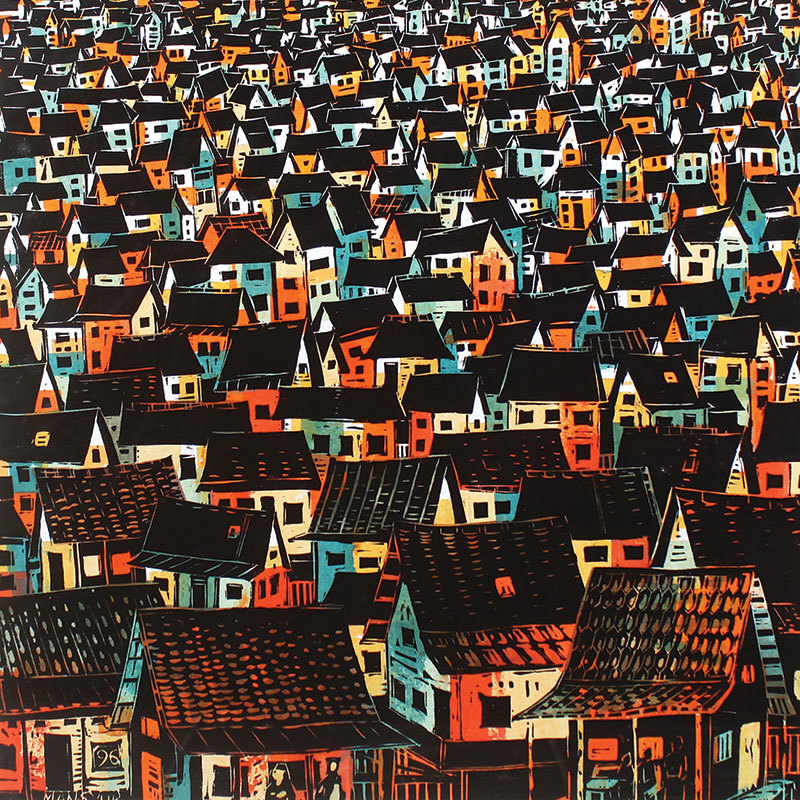Not too many people realise that the island of Belitung has had a small yet rather remarkable relationship with Indonesian art.

Photo courtesy of Amir Sidharta/NOW!JAKARTA
Although Raden Saleh never actually went to Belitung, in 1855 he painted a portrait of John Francis Loudon, the first administrator of the Billiton Maatschappij (Company), set on the island. In the twentieth century, the company became quite an important enterprise, and many doctors were stationed there. Among them were collectors of fine art who brought with them their collections of paintings. At least one painting by the Belgian artist Adrian Jean Le Mayeur de Merpres is known to have been displayed in a doctor’s residence on the island.
Although Belitung’s beaches have always been undeniably beautiful, in the past many people were sent to the island to provide services to its residents. Mas’ud Asaf, was a judge of Bugis and Bone descent living in Makassar. When the religious court had just been set up on the island of Belitung in 1964, he was assigned there. He brought his family with him, including his four-year-old son Mansyur Mas’ud.
In the 1970s Mansyur’s uncle, Karim Labana, came to Belitung to become a biology teacher, but he loved to draw. Sometimes he would also paint using “Flying Horse” paints commonly used for colouring wood. Mansyur was intrigued by the way his uncle created art and was inspired by his work. In junior high school, he was selected to represent his school at an exhibition on the occasion of National Education Day. He made a painting of Ki Hadjar Dewantara, the pioneer of Indonesian education.

Upon completing junior high school, in 1977 he moved to Yogyakarta to continue his education at the MUHI high school. Many of his roommates there were students of the Academy of Fine Arts. Therefore, although he had thought of becoming a dentist, he decided that he wanted to become an artist, and entered the Academy. There he joined the graphic art studies programme of the school of fine arts.
After graduating, Mansyur decided to move to Jakarta and work at the Pasar Seni “Art Market” in Ancol. There he worked on conventional graphic art as he learned in college, making wood block prints on paper. He preferred hardboard or wooden planks to linoleum. “Lino is too soft for me, and it does not show the expressiveness of the tough material,” he explained.
Since the 1990s, he started experimenting to make prints on canvas, as the material was more durable than paper, and it is also more difficult to forge. “In graphic arts, I am the first to make prints on canvas,” he claims.
Usually when a graphic artist creates artwork, he starts by chiselling on a board according to the image he/she wants to create. Ink is applied on to the uncarved surfaces and then transferred to the paper or canvas. After the year 2000, Mansyur started a new method in working on his art. Instead of making prints using the block of hardboard, he decided to make the hardboard itself as the single original artwork.

After working from Ancol’s Pasar Seni for around thirty years, five years ago he decided to move to Belitung. “In the beginning Ancol was an attractive place to work as an artist, as the artists and the management always attempted to establish a synergetic and constructive cooperation,” he reminisced. Unfortunately today things are no longer like it was before in Ancol, especially for artists who have developed their capabilities.
“Although Belitung might not yet have a promising art market, to work as an artist on the island is very pleasing. Some of the collectors of my work have even managed to come to the island to view my most recent works and purchased them. Currently, Belitung has become a favourite tourist destination, and I would like to help support it through my art,” the artist said. In Belitung Mansyur Mas’ud became inspired to become an artist, and to Belitung he has returned to create art and inspire people to enjoy the island.
_______
This article is originally from paper. Read NOW!Jakarta Magazine July 2018 issue “Health in a Era of Urbanisation”. Available at selected bookstore or SUBSCRIBE here.







